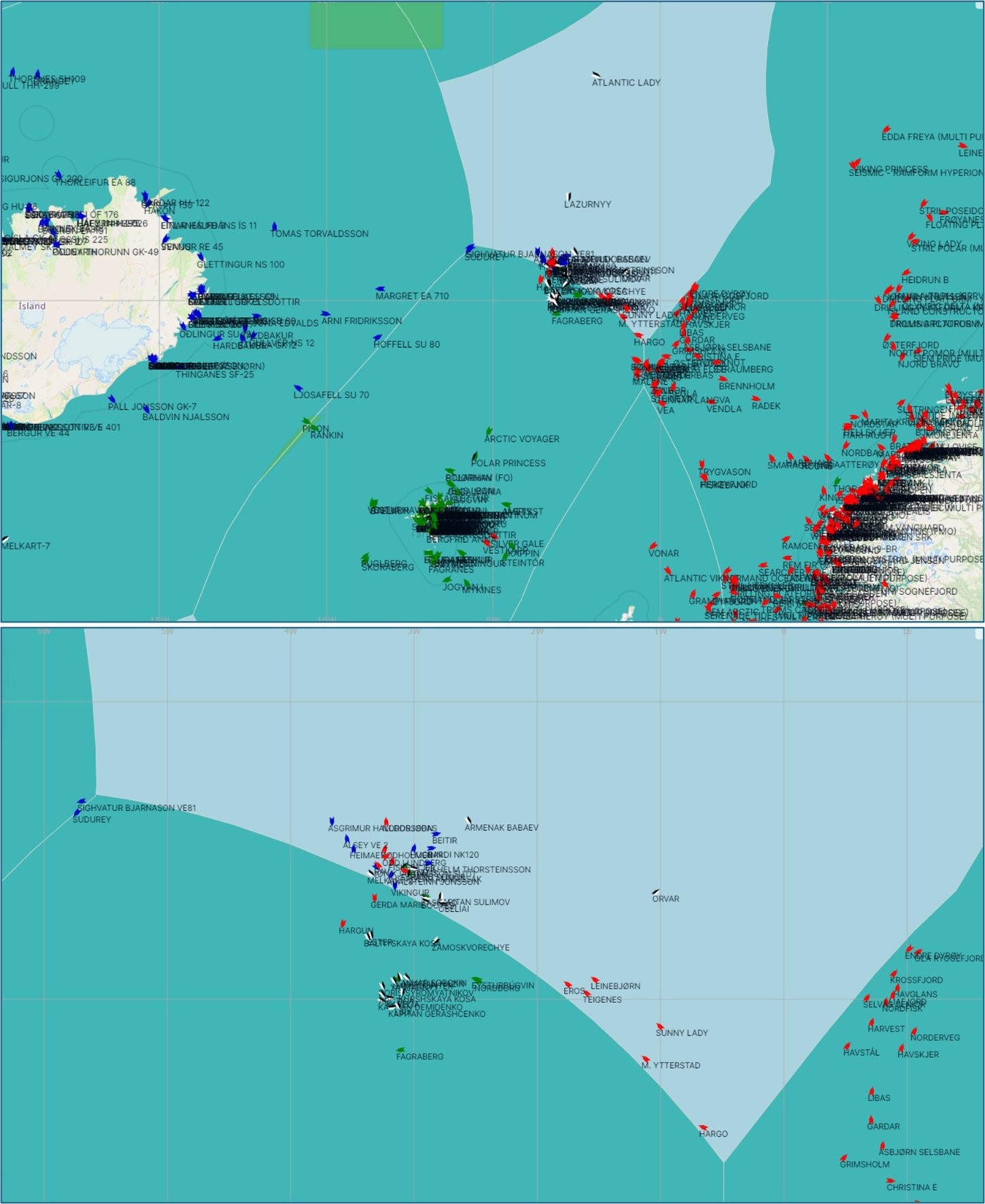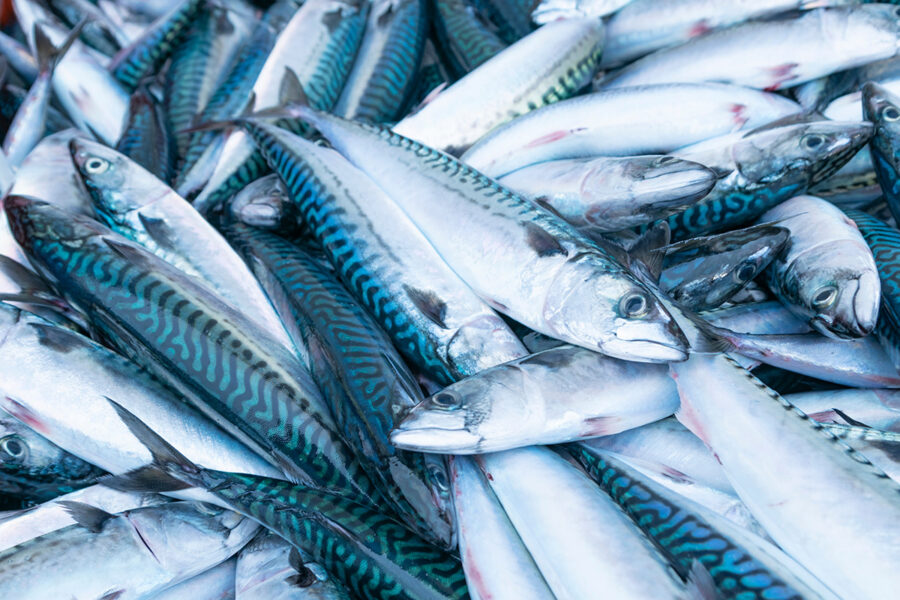International fishing effort on the migratory mackerel stock has accelerated, with fish being reported from the international zone, beyond any 200nm EEZ, providing a lifeline for vessels from Greenland, Iceland and Russia that are unable to find mackerel in their own waters.
Fishing appears to be concentrated on poor-quality summer-spawning fish, which will start to recover in quality as they continue their annual migration and fatten up as they reach the UK EEZ.

AIS screenshots from the region show a concentration of Russian and Icelandic pelagic vessels in international waters (shaded light blue) after their fleets failed to take their mackerel quotas within their own waters.
Dominic Rihan, chief executive of Killybegs Fishermen’s Association, who provided the AIS screenshot shown here, said: “Our information suggests the Icelandic and other fleets, including an increased number of Russian vessels, are currently fishing in international waters. They are making extremely long tows because the fish are so scattered.
“Operating on such a basis means the mackerel caught is of very poor quality, and is mostly going to fishmeal. The impact of this ‘out of season’ fishery on the overall stock is unknown but is likely to be negative, given it is based on the unilateral quotas that these countries have chosen to allocate themselves. This is unsustainable and an inefficient use of the resource.”
This mirrors analysis undertaken in the 2023 Norwegian mackerel fishery that showed lower CPUE, higher fuel bills and significantly reduced profitability for the Norwegian pelagic fleet because it was forced to access mackerel in Norwegian waters, rather than as it recovered condition whilst migrating later in the summer through the UK EEZ.
Meanwhile, early results are in from a survey looking at fish distribution across the region, with five research vessels from Iceland, Norway, Faroe and Denmark taking part. Initial results published by Iceland’s marine and freshwater fisheries institute Hafrannsoknastofnun showed an almost total absence of mackerel in Icelandic waters, despite continued claims by the country that it deserves increased shares of the TAC, based on northward migration of the stock into the Icelandic EEZ.
The survey trawls undertaken by the research vessel Árni Friðriksson found significant quantities of mackerel in just two out of 43 tows, in the far southeast of the Icelandic EEZ. Preliminary results, said the scientists, ‘show that the spread of mackerel in Icelandic territorial waters is the smallest that has been measured since the expedition was first launched in the summer of 2010’.
The 33-day survey also found fewer summer spawning herring in Icelandic waters than had been expected. “Only a few fish were caught at three stations. The lines of this expedition are too vague to give any information as to the size of that population,” the scientists reported.
The data will do little to support arguments from Iceland and Greenland for their current unilateral quota shares, which they say are based on zonal attachment – but neither country seems set to reduce its claims for increased mackerel and herring shares, as nations continue to play a game of dare over the stocks, which look set to be fished well above ICES recommendations again in 2024.
This story was taken from the latest issue of Fishing News. For more up-to-date and in-depth reports on the UK and Irish commercial fishing sector, subscribe to Fishing News here or buy the latest single issue for just £3.30 here.
Sign up to Fishing News’ FREE e-newsletter here.








